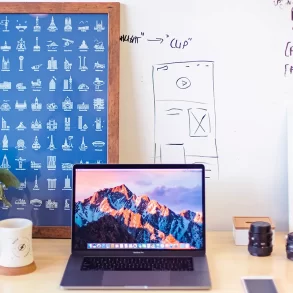A lot goes into building a successful brand. From a marketplace visibility perspective, one of the more important elements is the logo. Your logo determines how customers view your brand and establishes expectations. But do you know how to design a good logo?
Try these 5 Logo Design Tips
“Twitter only paid $15 for its iconic logo. Nike paid $35 for the swoosh. To design the perfect company logo, you don’t have to spend tons of money,” branding expert Issie Lapowsky explains. “You do, however, have to spend time and energy carefully considering what you want your logo to say about you.”
Once you understand what image you want your logo to convey, you can start on the design process. Here are some tips to help you find success:
Keep it very Simple
One of the biggest mistakes entrepreneurs make is designing a complicated logo. There’s nothing attractive about a complex logo. The more elements you have, the more you’re going to confuse and overwhelm your customers.

In this article you can clearly see the distinction between simple and complex logo designs. Brands like Apple, Dell, HP, Mitsubishi, Nike and FedEx all have simple logos that are exceptionally powerful. Then, companies like Starbucks, Heineken and Pirate Bay show you just how unsettling complex logos can be. Overall, aim to keep things simple and you’ll probably have better results.
Top Trade Show Booths of 2012Choose Colors Wisely
The colors you choose for your brand and logo has a big impact on how your customers feel about your brand. The psychology of color directly ties certain colors to specific emotions, which could be a positive or negative for your brand.

For example, red is highly energetic, passionate and bold, while blue is considered tranquil and trustworthy. White is clean, pure and sophisticated, whereas pink is fun and flirty. Depending on how you’re trying to position your brand, choosing one color over another could take you in an entirely new direction.
Think about Social Media
You can’t design a logo without thinking long and hard about social media and how it’ll look on different profiles. This shouldn’t be the defining factor in your logo design process, but it needs to play a role.
Setting Up and Running a Media Heavy WebsiteYour logo needs to be simple enough to be recognizable in a social media thumbnail image. Some companies actually create social media-specific logos that are simplified versions of their primary logos, but it’s best if you can keep things consistent across the board.
Make it Unique
Logo trends come and go. While there’s something to be said for creating a professional logo, you don’t want to pursue a trend at the expense of being labeled a copycat. Strive to create something totally unique even if it takes longer or costs more and you’ll be much happier in the long run.

“As you’re designing logos, consider whether or not your design is generic or unique. Is it likely that others will produce something similar? Remember, your first idea is typically your most generic (it’s also everyone else’s first idea),” designer Joshua Johnson says. “Try filling a notebook page or two with some rough sketches before choosing which ideas to pursue further.”
Creative Ways To Market Yourself As A DesignerThe Logo is Just One Part
When you’re designing a logo, it’s easy to become obsessed with every little detail. While there’s much to be said for perfecting your logo, it’s important to maintain some perspective. Your logo is just one part of the branding equation. It’s a significant part, but it’s not the entire thing.
Patience is your friend
When you’re building a brand, there’s always a lot of pressure to speed things along. You want to start bringing in revenue and get tired of all the behind-the-scenes work. But if you want to build a sustainable brand – something that’s not just a flash in the pan – it’s important that you remain patient. Meticulously pore over your logo and wait until you have something spectacular yet simple.
Smartphones – The New Age Conquerors of The eCommerce World






